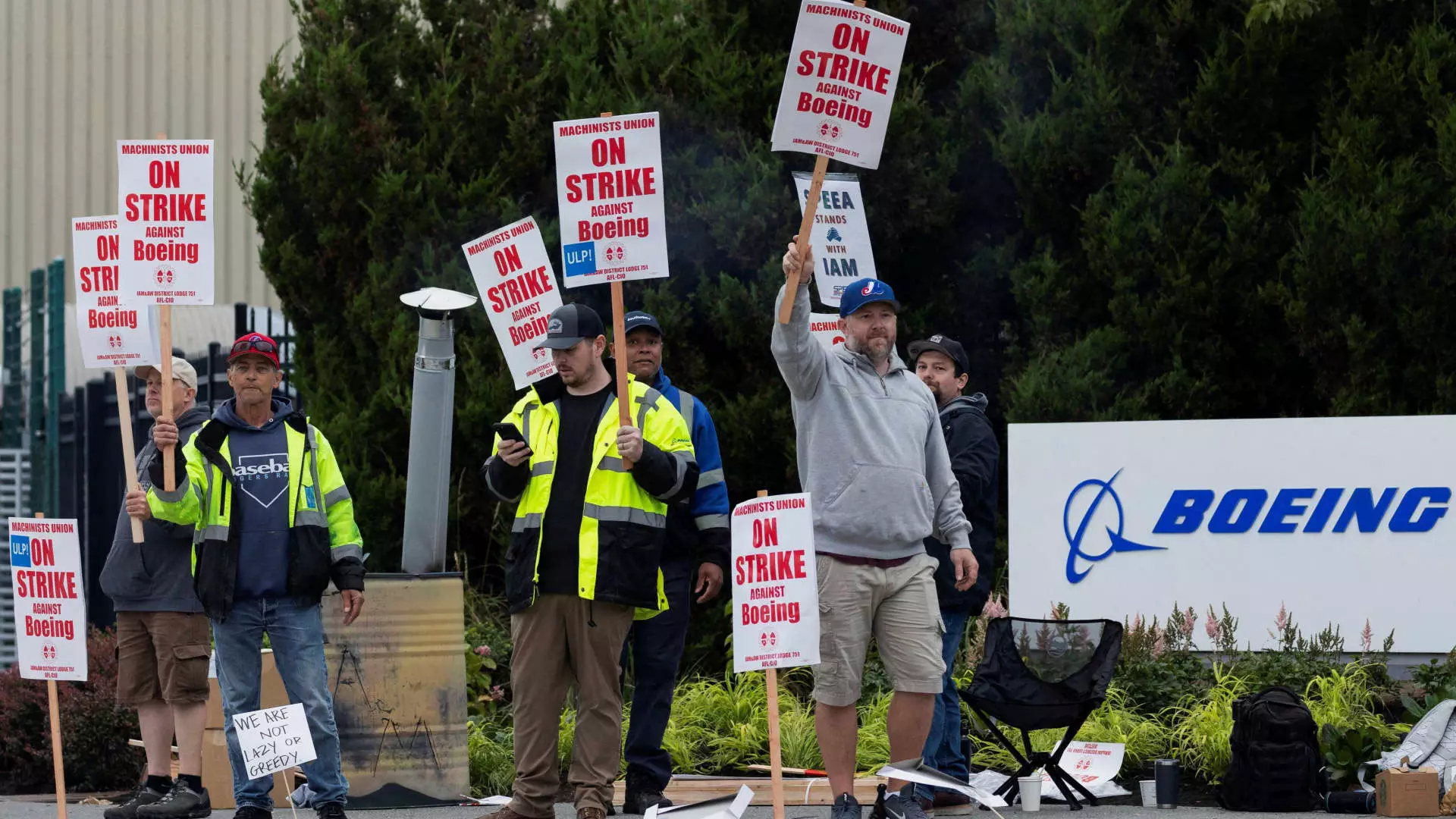In an era where labor disputes seem to be flaring up across various industries, the ongoing strike by Boeing machinists in the Pacific Northwest has captured national attention. Occupying the intersection of a critical workforce demand and a financially beleaguered aerospace giant, this strike is unfolding against the backdrop of a company grappling with a staggering $60 billion in debt. The union representing these machinists, the International Association of Machinists and Aerospace Workers, highlights the tension between a workforce demanding fair compensation and a corporation striving to recover from a series of operational crises.
The strike commenced following the rejection of a proposed labor contract that contained a 25% wage increase over four years—an offer deemed insufficient by more than 30,000 workers, who collectively voted nearly unanimously to forgo it. Sticking points in negotiations include demands for more substantial wage increases, annual bonuses, and the restoration of pensions lost in prior negotiations. As the costs of living, particularly the skyrocketing housing prices in Washington, strain workers, the urgency for a resolution only intensifies.
Initially, the financial toll of the strike is being felt acutely by Boeing, which Bank of America estimates is losing around $50 million a day due to halted production. The ramifications extend beyond the immediate financial implications for the company, cascading out to a wide network of suppliers. Parts and components essential to aircraft manufacturing are likely to see delays, which could disrupt not only Boeing’s operations but also the broader aerospace supply chain.
Workers have expressed that a significant part of their motivation for striking derives from economic pressures, particularly the soaring cost of living in the Seattle area. With the median home price plummeting from $253,800 in 2013 to $613,000 in 2023—an increase of 142%—the reality of affording housing has become increasingly bleak for many. As workers consider side jobs just to make ends meet, their resolve is further galvanized by the everyday struggles they face.
Boeing’s leadership, under the relatively new CEO Kelly Ortberg, is navigating a tricky path. Ortberg’s recent announcements of temporary furloughs for tens of thousands of staff undercut the company’s previous assurance of stability ahead of what is expected to be a lengthy negotiation process. The lack of meaningful progress in talks, as voiced by both union and company negotiators, emphasizes the stalemate that could potentially extend for months if the two sides cannot reach an agreement.
In addition to handling the fallout of the strike, Boeing must factor in its own historical context. Previous strikes, such as the impactful one in 2008, saw the company in a comparatively robust financial standing with less competition for skilled labor. Now, with the tight labor market straining workforce availability, Boeing confronts an array of complications. Layoffs or furloughs could hinder the company’s ability to recover in the long term after the strike ends. Given that aerospace training is specialized, capturing and maintaining skilled labor becomes even more precarious when competition is high, particularly in this period of rising demand for air travel.
Reflected in the ongoing negotiations and the call for fair pay are broader trends in labor relations within the United States. The Biden administration has encouraged both parties to reach a resolution, mirroring the national push toward fairer wages across various sectors. From autoworkers to airline employees, similar struggles are being played out in a society increasingly amenable to labor rights and workplace justice discussions.
Transport Secretary Pete Buttigieg’s public statements reinforce the administration’s view that resolution benefits not only the workers but also the company that needs to adopt a sustainable path forward. The challenge lies in balancing the restoration of Boeing’s reputation and stability while simultaneously addressing the workforce’s legitimate concerns.
As the strike continues and both sides remain entrenched in their positions, one crucial question looms: how long can Boeing endure this work stoppage without compromising its operational viability? With health benefits ceasing shortly and financial constraints tightening for the workforce, the pressure is mounting for a resolution that acknowledges both the economic realities of the machinists and the financial imperatives of Boeing.
Ultimately, the outcome of these negotiations will not just define the immediate future of Boeing and its workers but may also serve as a bellwether for labor relations in America at large, echoing through an era marked by heightened worker activism and industry struggles. As both sides work through their differences, the fate of an entire workforce and a crucial industry depends on the negotiations ahead.

